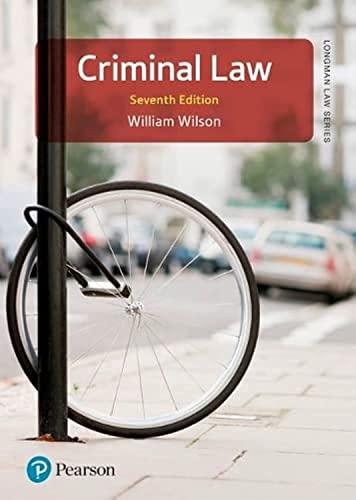Question
Draw a Pareto Chart corresponding to the below data generated from the supermarket pick-up order fulfillment process: In a very small number of cases, a
Draw a Pareto Chart corresponding to the below data generated from the supermarket pick-up order fulfillment process: In a very small number of cases, a pick-up order cannot be filled because one or more items in the order are not in stock. The supermarket then tries to call the customers but if they are unreachable, then they only learn this when they come to pick up their order. The probability that this customer will not come back after this experience is 5%. In a small number of cases, when customers arrive to pick up the orders, they find out that they have to pay more than what they expected because an item that they have ordered is not available. The supermarket then tries to call the customers if they would allow a similar item but is more/less expensive than the unavailable one. Sometimes, however, the customers are unreachable, then they will only find out they arrive the supermarket. The probability that this customer will not come back after this experience is 40%. In a very small number of cases, a pick-up order is cancelled if their credit card is not valid. The supermarket then tries to call the customers if they would provide a valid one. Sometimes, however, the customers are unreachable, then they will only find out they arrive the supermarket. The probability that this customer will not come back after this experience is 10%. Oftentimes, especially during peak time, customers have to wait for more than 10 mins to pick up their order due to queues. Customers find this annoying and the supermarket should do something to avoid such queues at pick-up. The probability that this customer will not come back after this experience is 15%. Sometimes the customer arrives at the scheduled time, but the order is not yet filled due to delays in the pick-up order fulfillment process. The probability that this customer will not come back after this experience is 20%. When making assumptions to analyse these issues, you may choose to equate "oftentimes" with "20% of orders", "sometime" with "5% of orders", "small number of cases" with "2% of orders" and "very small number of cases" with "1% of orders". You may also assume that the supermarket serves 200,000 pick-up orders a year and that the annual revenue of the supermarket attributable to pickup orders is $25 million.
Step by Step Solution
There are 3 Steps involved in it
Step: 1

Get Instant Access to Expert-Tailored Solutions
See step-by-step solutions with expert insights and AI powered tools for academic success
Step: 2

Step: 3

Ace Your Homework with AI
Get the answers you need in no time with our AI-driven, step-by-step assistance
Get Started


